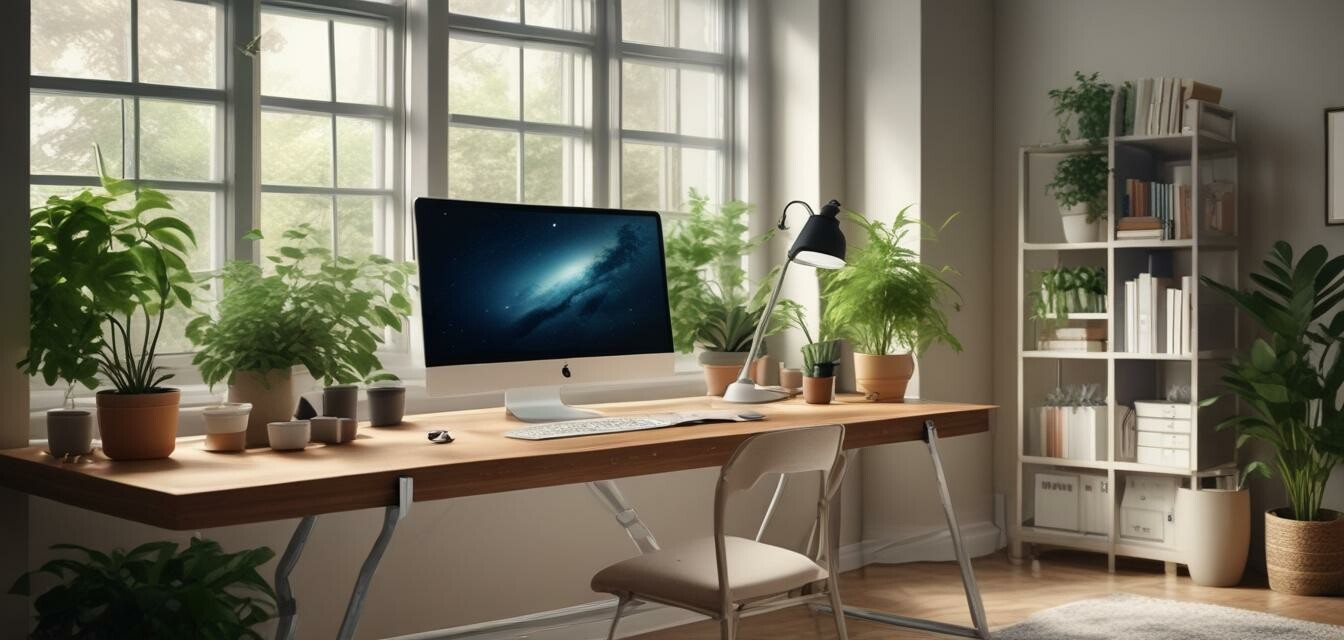
How to Create a Productive Zen Environment in Your Home Office
Key Takeaways
- Create a calming color palette for your workspace.
- Incorporate natural elements like plants and light.
- Organize your office with functional and aesthetic storage solutions.
- Minimize distractions to enhance focus.
- Customize lighting for optimal work conditions.
In today's fast-paced world, creating a workspace that promotes focus and tranquility is essential. A productive Zen environment can significantly enhance your efficiency, making your home office not just a place to work but a haven of calm productivity. In this guide, we'll explore various tips for designing a calming and organized workspace that enhances focus and reduces stress.
1. Choose a calming color palette
The colors you choose for your home office can significantly impact your mood and productivity. Soft shades of blue, green, and neutral colors create a calming atmosphere.
| Color | Effect on Mood |
|---|---|
| Blue | Promotes tranquility and focus |
| Green | Helps with balance and harmony |
| Gray | Creates a neutral, serene environment |
2. Incorporate natural elements
Adding plants and natural light can improve air quality and create a calming atmosphere. Consider placing a few low-maintenance indoor plants on your desk or shelves. Opt for:
- Snake Plant
- Peace Lily
- Pothos
Natural Light Solutions
Maximize natural light by positioning your desk near a window. Use sheer curtains to diffuse harsh sunlight while maintaining brightness. If this isn’t possible, consider:
- Full-spectrum light bulbs that mimic natural daylight.
- Light therapy lamps to boost mood and productivity.
3. Optimize layout and organization
A cluttered desk can lead to a cluttered mind. Organize your workspace with:
| Organization Item | Purpose |
|---|---|
| Drawer organizers | Keep stationery and tools tidy |
| Wall-mounted shelves | Maximize space and display decor |
| Desktop file holders | Keep documents organized and accessible |
4. Minimize distractions
To maintain a zen environment, it’s essential to minimize distractions. Here are some helpful tips:
- Limit noise by using noise-cancelling headphones.
- Set specific 'do not disturb' hours to communicate with family members.
- Deactivate notifications on your devices.
5. Customize your lighting
Having the right lighting can make a significant difference in how you feel while working. Here are some suggestions:
- Use adjustable desk lamps that allow you to control brightness.
- Incorporate soft LED string lights for a cozy ambiance.
6. Personalize your space
Your workspace should reflect your personality. Add personal touches that make you feel good. This could be:
- Framed photos of your family or friends
- Your favorite artwork or motivational quotes
- Unique gadgets that inspire creativity
7. Maintain cleanliness
A clean workspace is essential for both productivity and relaxation. Consider the following cleaning routine:
- Daily decluttering: Spend 5 minutes at the end of each day tidying up.
- Weekly deep clean: Dust surfaces, clean monitors and peripherals.
- Monthly organization: Reassess your storage and layout.
Tips for enhancing your Zen workspace
- Incorporate a few scent diffusers with calming essential oils.
- Play soft background music or nature sounds for added calm.
- Practice mindfulness or meditation for a few minutes before starting your workday.
Conclusion
Creating a productive Zen environment in your home office is entirely possible with a few thoughtful adjustments. By implementing calming colors, natural elements, and an organized layout, you can enhance both focus and tranquility. Remember, your workspace is an extension of yourself, so take the time to design it in a way that promotes a positive and productive atmosphere.
Pros
- Creates a calming and productive atmosphere.
- Improves focus and reduces stress.
- Personalized space reflects your style and preferences.
Cons
- Requires time and effort to design and maintain.
- May need adjustments based on changing needs and projects.
For more tips on enhancing your home office, check out our sections on DIY tips and tricks, or explore different ergonomic accessories to incorporate into your space.